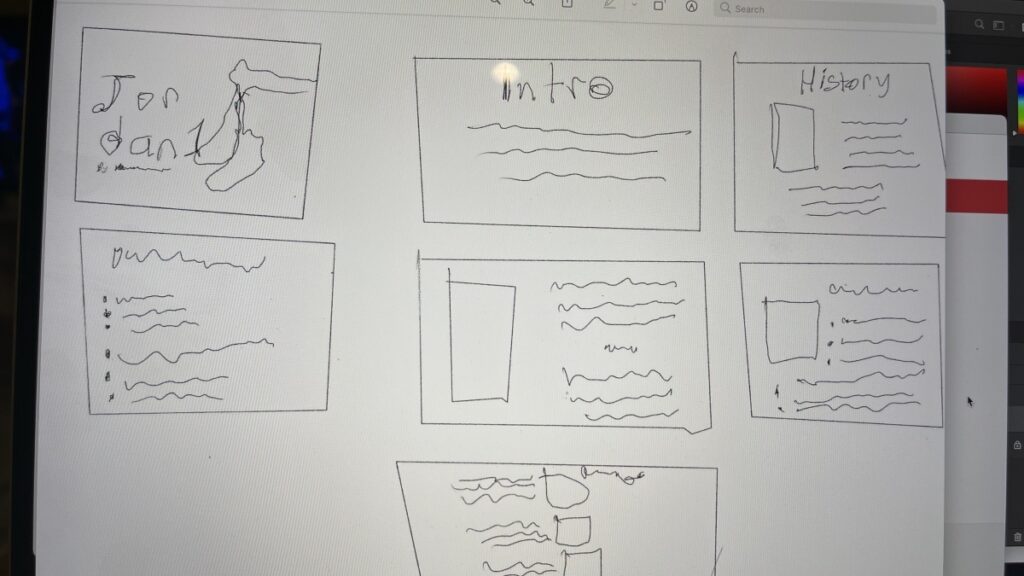

COMD3504 - Section OL06 - Fall 2020

How is the concept of mainstream vs underground relevant in contemporary design? The concept of mainstream vs underground explores how designs and designers take ideas, alter them and reissue them as new products. It’s taking underground ideas as a foundation to either rebuild or remake a product by “borrowing” another idea. Steven Heller states that “In the 1920s Earnest Elmo Calkins, a progressive American advertising executive, argued that quotidian products and advertising campaigns must borrow characteristics from avant-garde European Modern art. Despite the avant-garde’s anti establishment symbolism, cubistic, futuristic, and expressionistic veneers, he argued, would capture the consumer’s attention better than a hundred slogans.” This concept is relevant in contemporary design since contemporary design showcases multiple areas of design, influenced from ideas of all kinds, mainstream or underground. It is also relevant because it has become almost a strategy of marketing, advertising, and more to build off one idea underground or not, and make it your own. In Reflecting Contemporary Design Research, the author Ida Engholm states that “Aside from noticing a shoe for its comfort or elegance, contemporaries rarely take interest in this necessary object of daily life. However, the shoe is considerable in the history of civilization and art. … In recapturing this contact, in particular through sports, we begin its rediscovery.”Where do the designs or the designers fit into the dichotomy? (Jordan 1s)For my final project, I addressed how Jordan 1’s can be a source of media. The Jordan 1’s would fit under mainstream design rather than underground. The components of the shoe were pulled from other Nike designs that were already popular. The only difference the designer chose to do was to break the color barrier in footwear. Back then you would only find colorful shoes if they were running shoes or women’s aerobic sneakers. This idea goes back to Steven Heller’s concept of how “rebellion of any kind breeds followers, and many followers become a demographic.” Also, In Alternative and Mainstream Media: The Converging Spectrum, the author Linda Jean Kenix also states that “…it is important to remember that alternative media generally, although not exclusively, remain less commercially minded and more ideologically driven than the mainstream media. They continue to operate in ways that are often distinct from mainstream media.” The Jordan 1s are more commercially minded rather than less, making it more mainstream.
What sorts of underground work influenced the work in question?Since the Jordan 1’s shoe components were built off previous popular Nike shoes such as the Air Force 1’s, the shoe itself wasn’t really influenced from underground designs or ideas but rather from a previous shoe design Nike already had. In the Art of Shoemaking by William Brown he states that the “Sneakers that were once designed for athletic purposes are now more commonly used for fashion.” Which relates to the design of the Jordan 1s which were built off a popular sneaker for fashion, which would mean that the shoe was influenced by mainstream instead of underground work.
In what ways has the work in question shaped the mainstream? Will it do so in the future? Jordan 1’s created a cultural phenomenon and brought sports apparel and basketball shoes into the mainstream due to its popularity from Michael Jordan and basketball. From being only seen on the basketball court, it was almost seen worn everywhere. Heller states how “Outsiders may choose to join the mainstream on their own terms, but join they must be able to make an impact larger than their circumscribed circles.” The shoe has a strong identity and one so unique it couldn’t be replaced, leading it to make an impact larger than other shoes especially once it evolved its identity throughout the years and throughout society. It has shaped the mainstream by its evolution and following. Heller states that “All it takes is the followers of followers to cut a clear path to the mainstream.” The way the Jordan 1s have affected the mainstream should stay consistent in the future due to its strategic design and the marketing methods implemented for the shoe. It’s designed to always have a value due to its limit, and is designed for identities of all types allowing its demand to be relevant.
Engholm, Ida. Positions in Contemporary Design Research. Inderscience, 2011.
Polysemy
Linguistic Sign
Connoted
Denoted
Syntagm
Diegesis
Dialectics
denotation
paradigmatic
asyndeton
The absence of code desintellectuazises the message because it seems to find in nature the signs of culture
At all events, the denoted image, to the extent to which it does not imply any code





Human beings create things with an end goal in mind, but that creation doesn’t just fulfill that goal; it goes beyond it. When we create something, we do it to appease one problem, but that creation then becomes a medium itself for other things. Marshall McLuhan uses the example of the creation of the railway to explain this. He states, “The railway did not introduce movement or transportation or wheel or road into human society, but it accelerated and enlarged the scale of previous human functions, creating totally new kinds of cities and new kinds of work and leisure”. Media extends human beings because the creation of one thing becomes the solution to other problems, or it creates new ways to do things. Just like the railway; a network of tracks, also brought about the innovation of cities and new jobs. As we advance and create these mediums, they become extensions for us and extend our society. There is only one problem with these extensions, and that’s that they bring in the loss of jobs for individuals. The reason for this is automation, which is the use of machines to do human processes. These machines are human creations, medias.
Being that the medium is the message, artists and designers can hold a lot of power in creating new ideas but have no power over the message that that idea will send out. “Many people would be disposed to say that it was not the machine, but what one did with the machine, that was its meaning or message” (1). McLuhan uses this line to explain that that it is not the designer’s creation that sent a message, but what people used that creation for. The creation of electric light is a very good example of this. “Whether the light is being used for brain surgery or night baseball is a matter of indifference. It could be argued that these activities are in some way the “content” of the electric light, since they could not exist without the electric light. This fact merely underlines the point that “the medium is the message” because it is the medium that shapes and controls the scale and form of human association and action” (2). Light was created just for the purpose of seeing better, but from it came things that couldn’t exist without it, and that wasn’t something the creator of electric light came up with it, that’s just how the people used it.
It’s very simple to explain why the work of a designer is subordinate to the media they use to create and distribute information. After a designer creates something, that thing takes control of itself. It’s not up to the designer what it can do or what it can be used for. It is no longer up to him what society will decide to use to for and what else it can make out of it. The extensions that come from that designer’s creation is no longer in their hand, that is why the designer is subordinate to their own creation. Better said by McLuhan, “In terms of the ways in which the machine altered our relations to one another and to ourselves, it mattered not in the least whether it turned out corn- flakes or Cadillacs” (1). The machine alters humans, humans do not alter the machine.
Andre mercharles
Assignment 2
Communication design theory
Comd3504
“Some people regard language, when reduced to its elements, as a naming-process only—a list of words, each corresponding to the thing that it names” (Saussure 65). Simply put, language is a form of communication, but it can get more complex than that. When speaking about written language, you have signs, letters, words, numbers, and a more recent innovation, emojis. Language can be spoken or written and differentiates depending on region, culture, and religion. Though language is a form of communication, they are two different things. Language is a subcategory in communication, while communication goes beyond the written language and expands to things like body language, gestures, emotions, music, etc. Communication can translate the same through all the different types of languages.
Language in design is very important because it allows a message to come through. Without it, a designer cannot get a clear understanding of what they need to convey through their art, and the audience or client wouldn’t be able to pick up what it is the designer is trying to say. Language in design is used in a way that eliminates the necessity to verbally explain an idea. There are many pieces of art all over the world that speak through expressions and visualization and could be misinterpreted if there wasn’t the universal language designers use. This language consists of symbols and iconography. These two things relate to language because each symbol is known to have its own meaning. Most of these symbols are universal and translate to the same thing no matter the language. Symbols and icons are significant in languages as well because they can convey the message that you are trying to send without saying or writing words out, instead simply understanding what an image/ icon relates to. For example, the image of an arrow pointing left letting you know to go left without the need to spell out the words “turn left”.
Signs, signifiers, and the signified are employed in general communication as a unit; a team working together to create communication. Sign is the designated term for what you see in your brain when you combine a sound with an image. As Saussure explains with the example of the word “arbor”, “One tends to forget that arbor is called a sign only because it carries the concept “tree,” with the result that the idea of the sensory part imphes the idea of the whole”(Saussure 67). The signifier and signified “ have the advantage of indicating the opposition that separates them from each other and from the whole of which they are parts”(Saussure 67). They separate the word from the image you have engraved in your brain of what it means. Designers use this to their advantage in graphics. If a designer were to work on an ad, and when you see it, front and center you see a cat, you would assume that the ad has to do something with cats; cat food, cat toys, cat adoption, or anything related. You would assume this without the need to even read the word “cat”. A designer is able to convey a message or tell you the reason for the ad without the need for words. Archaic numbering systems and rudimentary signage show us the process and evolution language and design have gone through. As Lupton-Miller explains, “A look at several early forms of numerical notation reveals a fluid range of forms through which human cultures have attempted to depict the order– numerical and linguistic– of the world”.
Specifically for Italy, author Filippo Tommaso Marinetti, was looking towards the idea of futurism for the coming decades. He envisioned Italy stepping out its comfort zone of looking at art in museums and dwelling over memories and instead turning that rage that art made them feel into new creations. He wanted new art to turn into a representation of rage, courage, and aggression. Marinetti states, “To admire an old picture is to pour our sensibility into a funeral urn instead of casting it forward with violent spurts of creation and action” (Marinetti). And while Marinetti basket in the idea of futurism, constructivist Aleksandro Rodchenko did so in the idea of functionalism. When it came to new possibilities for art, Rodchenko hoped for artists to turn away from representational art and instead turn to utility. He wanted to see art in things such as a pair of boots, a mug or a magazine. For the future of the 20th century, Constructivist, El Lassitzky, on the other hand suggested one simple idea; books becoming international in language. He wanted both the representation of an image and the sound of a letter to mix in books and become something that transcends the language barriers. “The coming book must be both. The energetic task that art must accomplish is to transmute the emptiness into space, that is, into something that our minds can grasp as an organized unity”(Lissitzky 27). For all artists, you can say that the big question in looking into the future was, “Do you want to waste the best part of your strength in a useless admiration of the past, from which you will emerge exhausted, diminished, trampled on?” (Marinetti).
A “Constructivist” is an artist embracing technology to become a constructor and an activist. In the first couple of lines in his manifesto, Rodchenko makes clear that his vision for the future of the artist is the embracing of technology, one of his statements being, “previously—Engineers relaxed with art now—Artists relax with technology”. Though technology would pose a threat for artists, it was something they rather embraced and worked with rather than shy away from. Rodchenko admits to technology being the enemy, but not something that will overcome him by stating “Technology is—the mortal enemy of art. technology. . . . We are your first fighting and punitive force. We are also your last slave-workers”. Artist El Lissitzky saw technology moving the arts forward in a way called “dematerialism”. Dematerialism is essentially the decrease of materials used to make a process simpler and more innovative. Like the example he uses of mail, “correspondence grows, the number of letters increases, the amount of paper written on and material used up swells, then the telephone call relieves the strain” (Lissitzky 26). And that’s what technology will continue to do for the future, one innovation relieving the strain of another which was taking more time, effort, and resources.
Artists Marinetti and Lissitzky shared a common view in believing that the meaning of a piece of art doesn’t evolve with it. Lissitzky stated that “Every invention in art is a single event in time, has no evolution… this work of art becomes so automatic-mechanical in its performance that the mind ceases to respond to the exhausted theme; then the time is ripe for a new invention”. Like Marinetti stated at the beginning of his manifesto, both of these artists agree that the art seen in museums and places alike evoke a feeling, but don’t spark new emotions and creativity. They both believe that art has its time, but when it comes time to make new art, artists have to embrace that. While Marinetti put it in more poetic terms, Lissitzky put it in simpler terms; “The invention of easel pictures produced great works of art, but their effectiveness has been lost” (Lissitzky 29)
Rodchenko’s idea of turning to industrial and functional art is an element that proved a bit problematic. New artists soon began to use the label of constructivism to label themselves genius while still designing things that went against the foundation of what constructivism was. As Rochenko explains, ‘“new’ constructivists jumped on the bandwagon, wrote “constructive” poems, novels, paintings, and other such junk. Others, taken with our slogans, imagine themselves to be geniuses, designed elevators and radio posters, but they have forgotten that all attention should be concentrated on the experimental laboratories, which show us new elements, routes, things, experiments” (Rodchenko 24). While Rodchenko’s idea of constructivism is a bit problematic for artists in the present, Lissitzky’s ideas about dematerializing seems to be thriving and truer than ever. In the past, present, and future, new inventions of technology seem to continue to replace older versions of themselves.
© 2024 Communication Design Theory
Theme by Anders Noren — Up ↑
Recent Comments